Abstract
A cohort of some 11,000 men born 1891-1920 and employed for at least one month in the chrysotile mines and mills of Quebec, was established in 1966 and has been followed ever since. Of the 5351 men surviving into 1976, only 16 could not be traced; 2508 were still alive in 1989, and 2827 had died; by the end of 1992 a further 698 were known to have died, giving an overall mortality of almost 80%. This paper presents the results of analysis of mortality for the period 1976 to 1988 inclusive, obtained by the subject-years method, with Quebec mortality for reference. In many respects the standardised mortality ratios (SMRs) 20 years or more after first employment were similar to those for the period 1951-75--namely, all causes 1.07 (1951-75, 1.09); heart disease 1.02 (1.04); cerebrovascular disease 1.06 (1.07); external causes 1.17 (1.17). The SMR for lung cancer, however, rose from 1.25 to 1.39 and deaths from mesothelioma increased from eight (10 before review) to 25; deaths from respiratory tuberculosis fell from 57 to five. Among men whose exposure by age 55 was at least 300 million particles per cubic foot x years (mpcf.y), the SMR (all causes) was elevated in the two main mining regions, Asbestos and Thetford Mines, and for the small factory in Asbestos; so were the SMRs for lung cancer, ischaemic heart disease, cerebrovascular disease, and respiratory disease other than pneumoconiosis. Except for lung cancer, however, there was little convincing evidence of gradients over four classes of exposure, divided at 30, 100, and 300 mpcf.y. Over seven narrower categories of exposure up to 300 mpcf.y the SMR for lung cancer fluctuated around 1.27 with no indication of trend, but increased steeply above that level. Mortality form pneumoconiosis was strongly related to exposure, and the trend for mesothelioma was not dissimilar. Mortality generally was related systematically to cigarette smoking habit, recorded in life from 99% of survivors into 1976; smokers of 20 or more cigarettes a day had the highest SMRs not only for lung cancer but also for all causes, cancer of the stomach, pancreas, and larynx, and ischaemic heart disease. For lung cancer SMRs increased fivefold with smoking, but the increase with dust exposure was comparatively slight for non-smokers, lower again for ex-smokers, and negligible for smokers of at least 20 cigarettes a day; thus the asbestos-smoking interaction was less than multiplicative. Of the 33 deaths from mesothelioma in the cohort to date, 28 were in miners and millers and five were in employees of a small asbestos products factory where commercial amphiboles had also been used. Preliminary analysis also suggest that the risk of mesothelioma was higher in the mines and mills at Thetford Mines than in those at Asbestos. More detailed studies of these differences and of exposure-response relations for lung cancer are under way.
Full text
PDF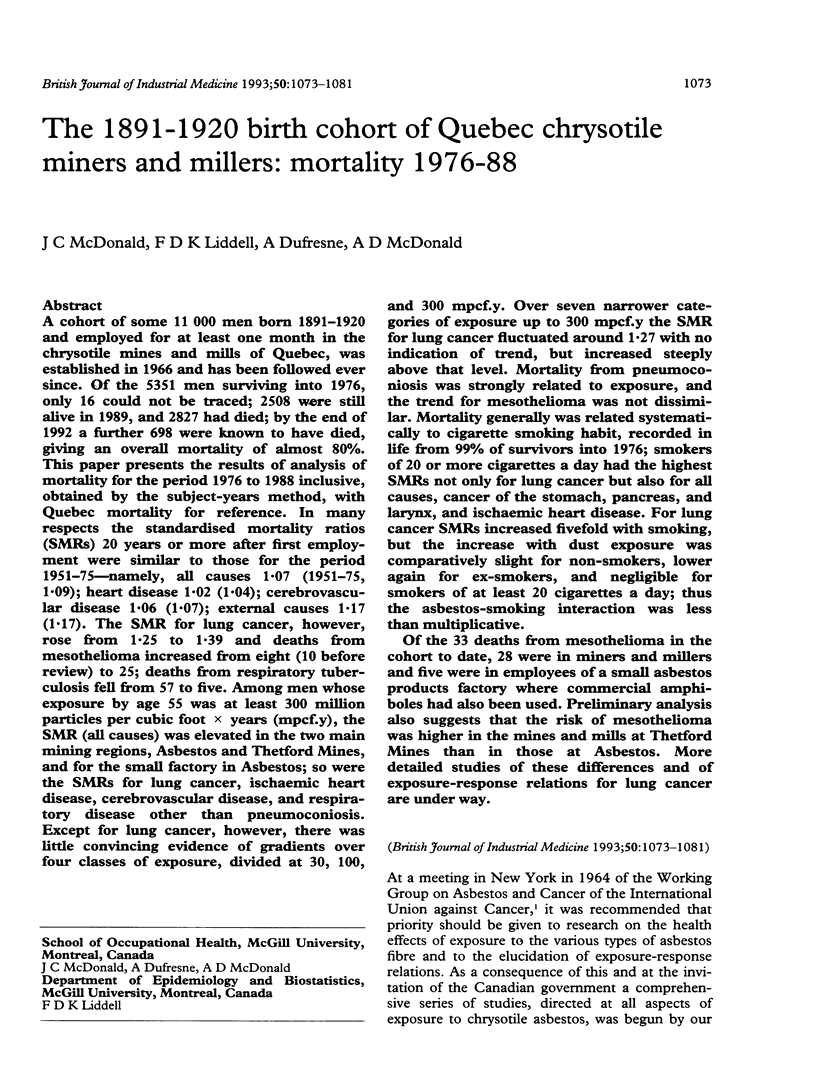
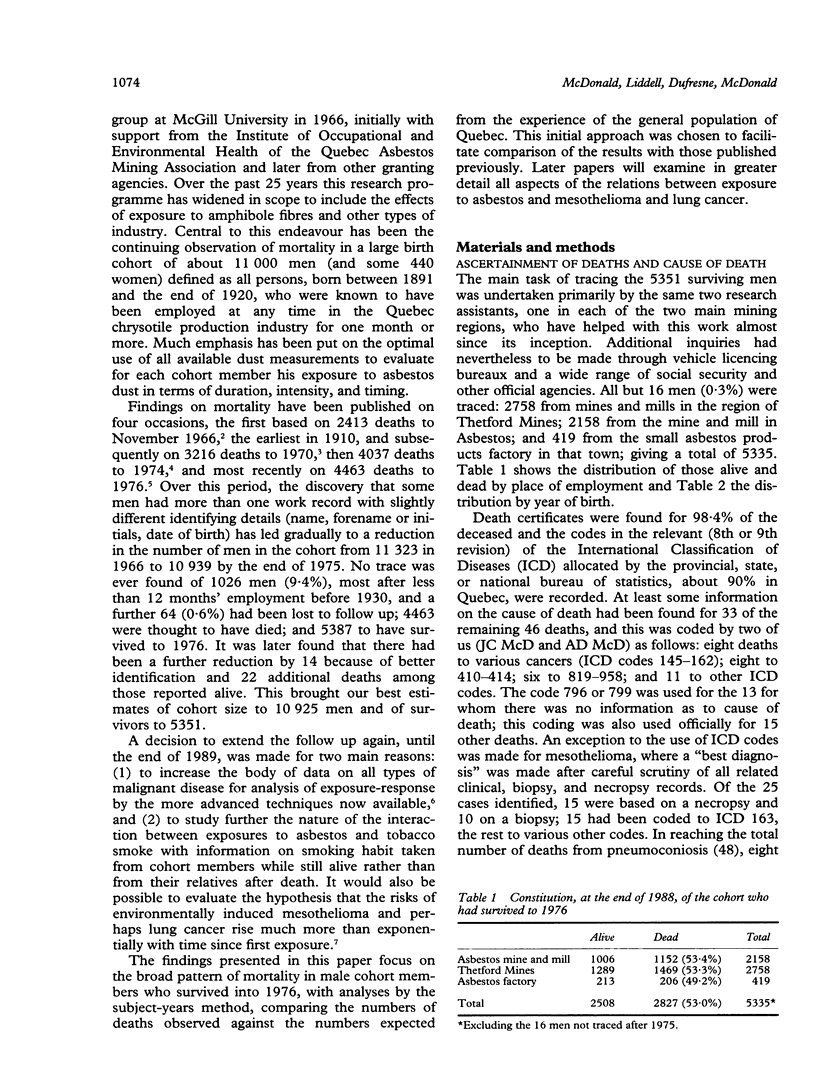

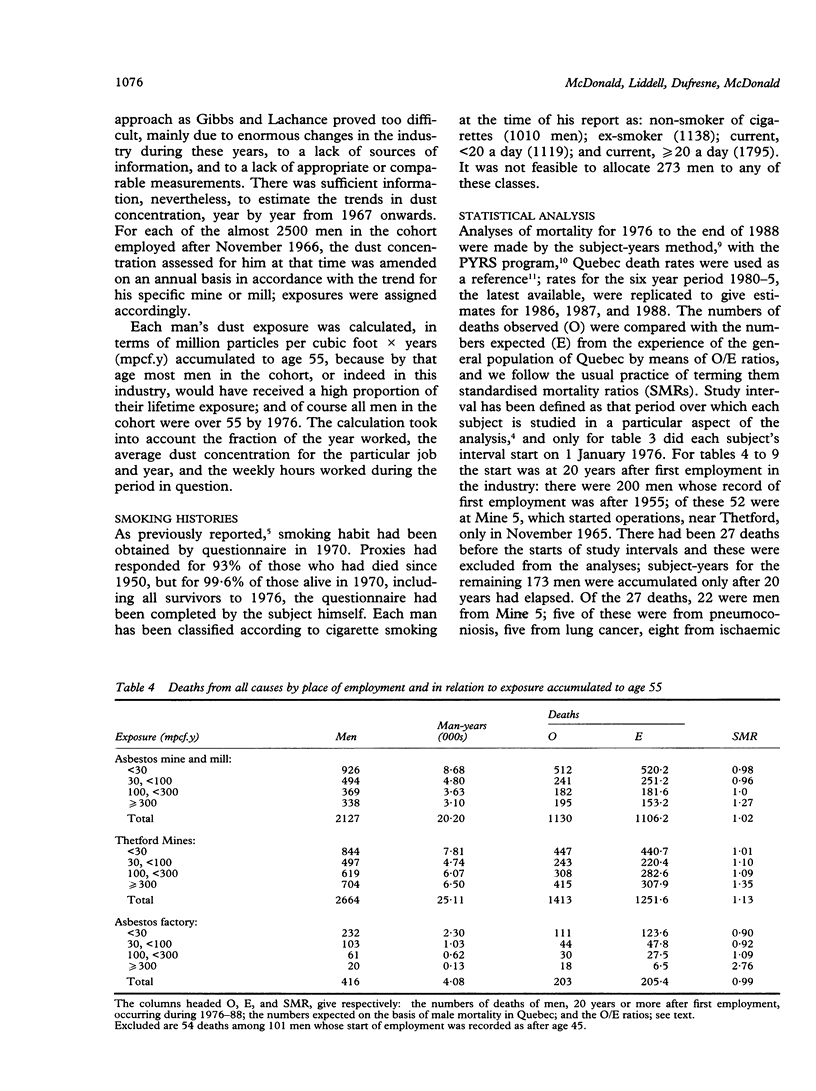

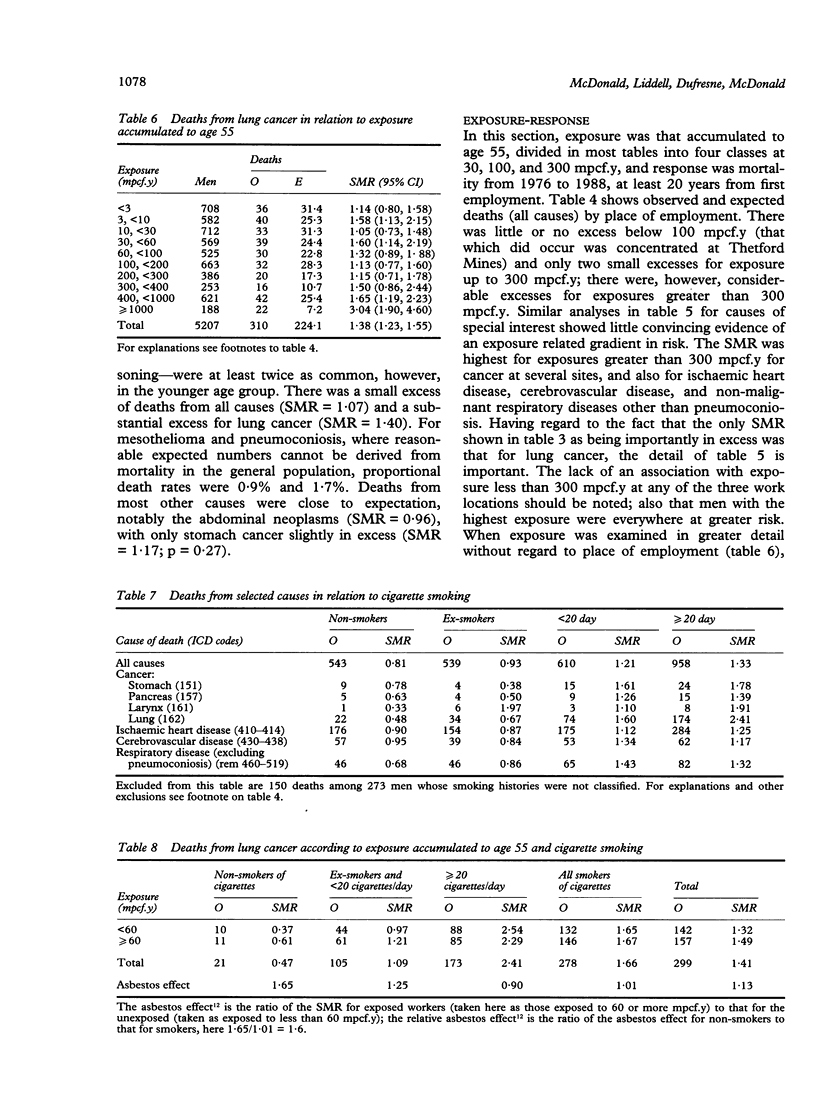


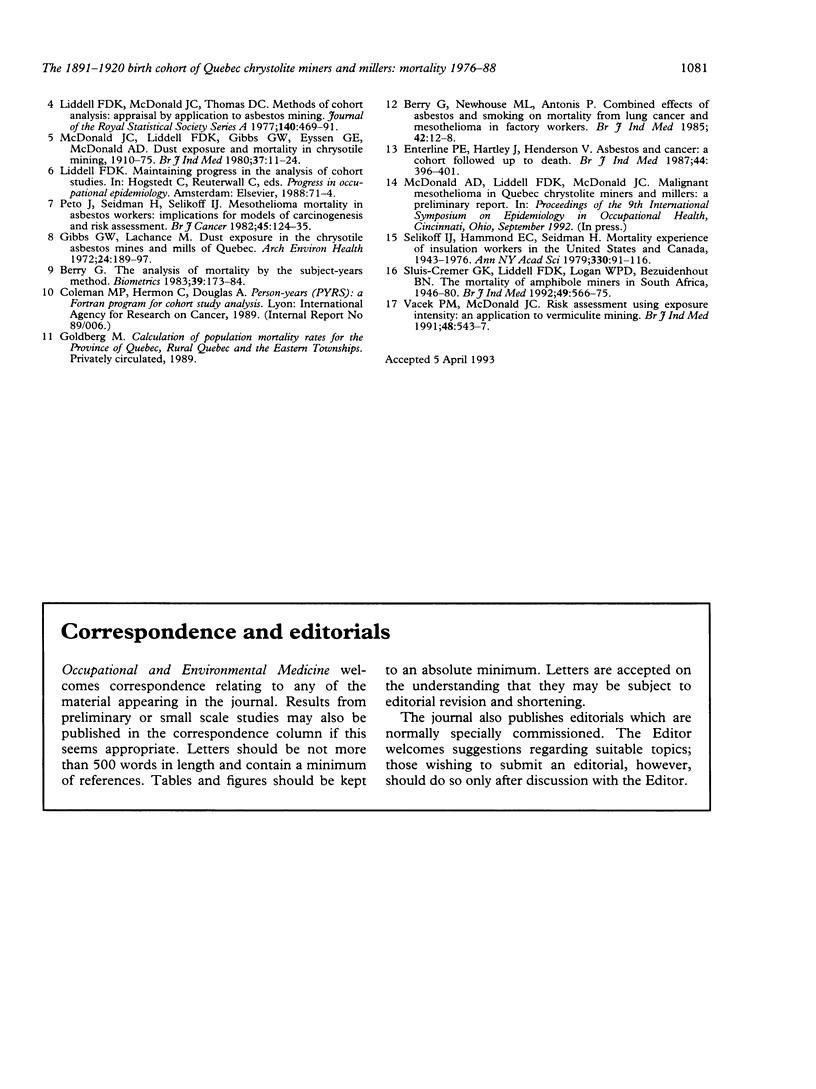
Selected References
These references are in PubMed. This may not be the complete list of references from this article.
- Berry G. The analysis of mortality by the subject-years method. Biometrics. 1983 Mar;39(1):173–184. [PubMed] [Google Scholar]
- Enterline P. E., Hartley J., Henderson V. Asbestos and cancer: a cohort followed up to death. Br J Ind Med. 1987 Jun;44(6):396–401. doi: 10.1136/oem.44.6.396. [DOI] [PMC free article] [PubMed] [Google Scholar]
- Gibbs G. W., Lachance M. Dust exposure in the chrysotile asbestos mines and mills of Quebec. Arch Environ Health. 1972 Mar;24(3):189–197. [PubMed] [Google Scholar]
- McDonald J. C., Liddell F. D., Gibbs G. W., Eyssen G. E., McDonald A. D. Dust exposure and mortality in chrysotile mining, 1910-75. Br J Ind Med. 1980 Feb;37(1):11–24. doi: 10.1136/oem.37.1.11. [DOI] [PMC free article] [PubMed] [Google Scholar]
- McDonald J. C., McDonald A. D., Gibbs G. W., Siemiatycki J., Rossiter C. E. Mortality in the chrysotile asbestos mines and mills of Quebec. Arch Environ Health. 1971 Jun;22(6):677–686. doi: 10.1080/00039896.1971.10665923. [DOI] [PubMed] [Google Scholar]
- Peto J., Seidman H., Selikoff I. J. Mesothelioma mortality in asbestos workers: implications for models of carcinogenesis and risk assessment. Br J Cancer. 1982 Jan;45(1):124–135. doi: 10.1038/bjc.1982.15. [DOI] [PMC free article] [PubMed] [Google Scholar]
- Selikoff I. J., Hammond E. C., Seidman H. Mortality experience of insulation workers in the United States and Canada, 1943--1976. Ann N Y Acad Sci. 1979;330:91–116. doi: 10.1111/j.1749-6632.1979.tb18711.x. [DOI] [PubMed] [Google Scholar]
- Sluis-Cremer G. K., Liddell F. D., Logan W. P., Bezuidenhout B. N. The mortality of amphibole miners in South Africa, 1946-80. Br J Ind Med. 1992 Aug;49(8):566–575. doi: 10.1136/oem.49.8.566. [DOI] [PMC free article] [PubMed] [Google Scholar]
- Vacek P. M., McDonald J. C. Risk assessment using exposure intensity: an application to vermiculite mining. Br J Ind Med. 1991 Aug;48(8):543–547. doi: 10.1136/oem.48.8.543. [DOI] [PMC free article] [PubMed] [Google Scholar]


